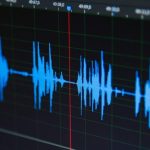 Editing audio recordings is a crucial step in producing high-quality content for various purposes, such as podcasts, interviews, webinars, and more. Whether you’re a beginner or a seasoned audio editor, there are several tips and techniques that can help you enhance the overall audio quality, eliminate background noise, and create a polished final product. In this blog post, we will discuss some top tips for editing audio recordings that can take your audio editing skills to the next level.
Editing audio recordings is a crucial step in producing high-quality content for various purposes, such as podcasts, interviews, webinars, and more. Whether you’re a beginner or a seasoned audio editor, there are several tips and techniques that can help you enhance the overall audio quality, eliminate background noise, and create a polished final product. In this blog post, we will discuss some top tips for editing audio recordings that can take your audio editing skills to the next level.
1. Familiarize Yourself with the Editing Software:
Before diving into editing your audio recordings, take some time to familiarize yourself with the editing software you’re using. Whether it’s a professional digital audio workstation (DAW) or a user-friendly editing tool, knowing the ins and outs of the software will save you time and help you achieve desired results efficiently. Learn about features like cutting, trimming, splitting, crossfading, and applying effects to make the most out of your editing process.
2. Clear Out Unwanted Background Noise:
Background noise can significantly affect the overall quality of your audio recording. As an editor, it’s vital to identify and eliminate any unwanted noise or disturbances. Use noise reduction tools within your editing software to minimize hisses, hums, clicks, or any other unwanted sounds that may be present in the recording.
3. Master the Art of Cutting and Trimming:
Cutting and trimming are fundamental editing techniques that can help remove any unnecessary portions or mistakes from your audio recording. Carefully listen to the recording and identify any sections that need to be removed, such as long pauses, repetitive sentences, or background conversations. By using the cutting and trimming functions, you can ensure a smooth and concise final product.
4. Adjust Volume Levels:
Maintaining consistent volume levels throughout the audio recording is essential for a pleasant listening experience. Use equalization (EQ) tools to balance the frequency range and ensure that all elements, such as voices and music, are clear and well-balanced. Additionally, adjust the overall volume levels to avoid any sudden changes or distortions that may occur during different parts of the recording.
5. Apply Audio Effects:
Audio effects can enhance the overall quality and aesthetics of your audio recording. Experiment with effects such as reverb, delay, compression, and equalization to add depth, clarity, and professional touches to your audio. However, it is crucial to use effects sparingly and purposefully, ensuring they complement the content and serve the intended purpose.
6. Smooth Transitions with Crossfades:
When combining different sections of audio or blending multiple recordings, smooth transitions are key. Utilize the crossfade function to create seamless transitions between different clips, eliminating any sudden jumps or interruptions. Crossfades help maintain continuity and improve the overall listening experience.
7. Use Markers and Labels:
To keep track of important parts or make notes during the editing process, use markers and labels within your editing software. Markers allow you to quickly jump to specific sections of the recording, making it easier to locate and edit particular segments. Labels can help you organize the different parts of your recording, such as introductions, interviews, or music segments, resulting in a more structured editing workflow.
8. Perform Detailed Listening and Quality Checks:
Once you have completed the initial editing process, it’s essential to perform detailed listening and quality checks. Carefully listen to the entire recording to catch any remaining errors, clicks, or audio artifacts that may have been missed during the initial editing phase. Additionally, check the overall audio quality by analyzing the clarity, volume levels, and frequency balance.
Summary:
Editing audio recordings can be a rewarding and creative process, resulting in polished and professional content. By familiarizing yourself with the editing software, clearing out unwanted background noise, mastering cutting and trimming techniques, adjusting volume levels, applying audio effects, using crossfades, utilizing markers and labels, and performing detailed quality checks, you can elevate the quality of your audio recordings. Keep in mind that practice and experimentation are key to improving your audio editing skills over time. So, utilize these tips, embrace creativity, and enjoy the process of creating outstanding audio content.
Need Audio Documentation Equipment in Seattle, WA?
Welcome to Efficiency, Inc.! Efficiency, Inc. is a woman-owned and -operated voice processing solutions company in Seattle that services the Pacific Northwest. We offer courtroom recording and transcription equipment and software. We also offer dictation solutions that are available for single-hand or hands-free operation. Our audio and video solutions can also help with court and interview room recordings. Since 1954, we have been providing courtroom equipment as well as voice processing solutions for a wide spectrum of businesses and organizations. Our products use the latest technologies and come with on-site or remote support, installation, and training — all provided by your Efficiency team. Call us today!
